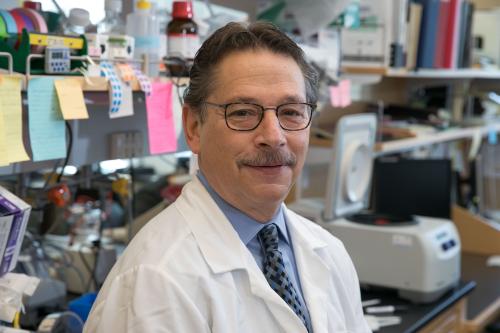
UCLA researcher receives NIH grant to develop a more affordable gene therapy for sickle cell disease
The National Institutes of Health has awarded a $773,763 grant to UCLA physician-scientist Dr. Donald Kohn to bring a new, potentially more affordable and efficient gene therapy for sickle cell disease to clinical trial.
The multi-year grant, part of the National Heart, Lung, and Blood Institute-led Cure Sickle Cell Initiative, will fund Kohn’s work to refine a gene therapy technique he developed that is showing promise in treating sickle cell disease in a clinical trial at UCLA.
“We are incredibly excited about our current clinical trial for sickle cell disease,” said Kohn, a professor of microbiology, immunology and molecular genetics and pediatrics at the David Geffen School of Medicine at UCLA and a member of the Eli and Edythe Broad Center of Regenerative Medicine and Stem Cell Research at UCLA. “At the same time, we’re always looking for ways to improve our techniques to make them more efficient and ultimately more affordable for patients.”
The most common inherited blood disorder in the United States, sickle cell disease, is caused by a mutation in the beta-globin gene. This mutation causes blood-forming stem cells – which can self-renew and make all types of blood and immune cells – to produce rigid, sickle-shaped red blood cells. These misshapen cells die early, leaving an insufficient number of red blood cells to carry oxygen throughout the body. Because of their sickle shape, these cells also get stuck in blood vessels, blocking blood flow and resulting in excruciating bouts of pain.
Anyone can be born with sickle cell disease, but it occurs more frequently in people of African and Hispanic descent in the U.S.
In recent years, gene therapy has emerged as a promising treatment candidate for sickle cell disease and a host of other conditions. Kohn has successfully developed gene therapies for several hematologic diseases, including a cure for a form of severe combined immune deficiency, also known as bubble baby disease.
Kohn’s gene therapy for sickle cell disease involves removing blood-forming stem cells from the patient, adding a modified version of the beta-globin gene that blocks sickling to the cells’ DNA, and then returning the corrected cells to the patient. These corrected cells should then be able to produce normal, healthy red blood cells.
To get the beta-globin gene into the DNA of patient cells, Kohn’s technique uses a viral vector – a modified virus that can deliver genetic information into a cell’s nucleus without causing infection. In addition to the corrected beta-globin gene, the vector carries pieces of genetic information – called regulatory elements – that are responsible for turning the new gene on at the correct time.
Kohn’s current clinical trial for sickle cell disease, funded by the California Institute for Regenerative Medicine, uses a particular kind of vector that – while effective – is costly to produce.
“The idea of gene therapy for sickle cell was just a dream for 20, 30 years,” said Kohn, who is also a member of the UCLA Children’s Discovery and Innovation Institute and the UCLA Jonsson Comprehensive Cancer Center. “Now it's actually a reality and it's working in multiple trials. We're now working on a version 2.0 to make this therapy more affordable so it can help more patients.”
In pursuit of this goal, Kohn and senior project scientist Roger Hollis worked with Richard Morgan, a fourth year medical student in the UCLA-Caltech Medical Scientist Training Program, to develop a new, smaller vector by trimming down the regulatory elements it carries.

They created more than 60 different vector combinations and tested their ability to correct the sickle cell mutation in blood-forming stem cells in the lab. One vector, which the team named Mini-G, stood out for being half the size of the vector used in Kohn’s current trial and five to 10 times better at integrating into the genome of the blood-forming stem cells and delivering the corrected gene.
Because Mini-G is smaller, it can be produced in larger quantities and gets into stem cells more effectively, which reduces costs. Kohn estimates that this new, pared down vector could decrease the cost of the vector component for gene therapy by at least three to 10-fold.
The new grant will provide the funds necessary to produce a high-quality batch of the vector for pre-clinical studies. Under the Cure Sickle Cell Initiative, funding is distributed in project milestone stages. Additional funding may be available for subsequent stages of the project to conduct all of the pre-clinical tests that are required to submit an Investigational New Drug application to the FDA, a critical step to bringing this new gene therapy to patients in a clinical trial.
This new therapeutic strategy is covered by a patent application filed by the UCLA Technology Development Group on behalf of The Regents of the University of California with Kohn, Morgan, Hollis and Aaron Cooper listed as co-inventors.
